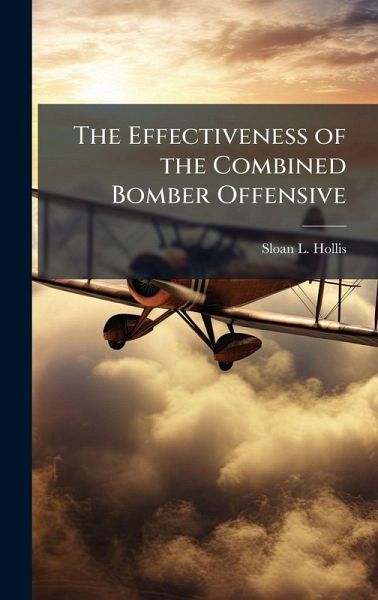
The Effectiveness of the Combined Bomber Offensive
Versandkostenfrei!
Versandfertig in über 4 Wochen
25,99 €
inkl. MwSt.
Weitere Ausgaben:

PAYBACK Punkte
13 °P sammeln!
Many air power proponents entered World War II with the belief that air power alone would bring Germany to its knees and force capitulation. This was not the official purpose of the Combined Bomber Offensive (CBO). This thought combined with the fact that the CBO did not produce a decisive victory often over shadows the fact that the CBO achieved its objectives and more. The official objective of the CBO was to reduce Germanyâs means to resist by establishing and exploiting air superiority, thus allowing the invasion of the continent in the spring of 1944. Despite the fact that the CBO did no...
Many air power proponents entered World War II with the belief that air power alone would bring Germany to its knees and force capitulation. This was not the official purpose of the Combined Bomber Offensive (CBO). This thought combined with the fact that the CBO did not produce a decisive victory often over shadows the fact that the CBO achieved its objectives and more. The official objective of the CBO was to reduce Germanyâs means to resist by establishing and exploiting air superiority, thus allowing the invasion of the continent in the spring of 1944. Despite the fact that the CBO did not produce a decisive victory over Germany, it was a decisive factor in the defeat of Germany. In order to understand how the CBO was effective one must examine both the intended and indirect effects of the operation. The intended effects resulted from CBO attacks against the German aircraft industry, transportation industry and infrastructure, and industrial system. However, the effects of these attacks rippled throughout the Third Reich. The unintended consequences of these direct attacks hampered Germanyâs capabilities to conduct war. The intended effects along with the indirect effects of the attacks best demonstrate how the CBO was effective. This work has been selected by scholars as being culturally important, and is part of the knowledge base of civilization as we know it. This work was reproduced from the original artifact, and remains as true to the original work as possible. Therefore, you will see the original copyright references, library stamps (as most of these works have been housed in our most important libraries around the world), and other notations in the work. This work is in the public domain in the United States of America, and possibly other nations. Within the United States, you may freely copy and distribute this work, as no entity (individual or corporate) has a copyright on the body of the work. As a reproduction of a historical artifact, this work may contain missing or blurred pages, poor pictures, errant marks, etc. Scholars believe, and we concur, that this work is important enough to be preserved, reproduced, and made generally available to the public. We appreciate your support of the preservation process, and thank you for being an important part of keeping this knowledge alive and relevant.









![Mr. Madison's War. A Dispassionate Inquiry Into The Reasons Alleged By Mr. Madison For Declaring An Offensive And Ruinous War Against Great Britain, By A New-england Farmer [j. Lowell] Cover Mr. Madison's War. A Dispassionate Inquiry Into The Reasons Alleged By Mr. Madison For Declaring An Offensive And Ruinous War Against Great Britain, By A New-england Farmer [j. Lowell]](https://bilder.buecher.de/produkte/75/75448/75448626n.jpg)


